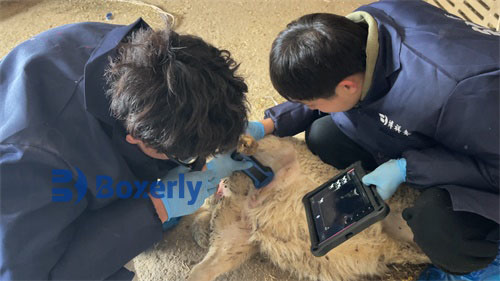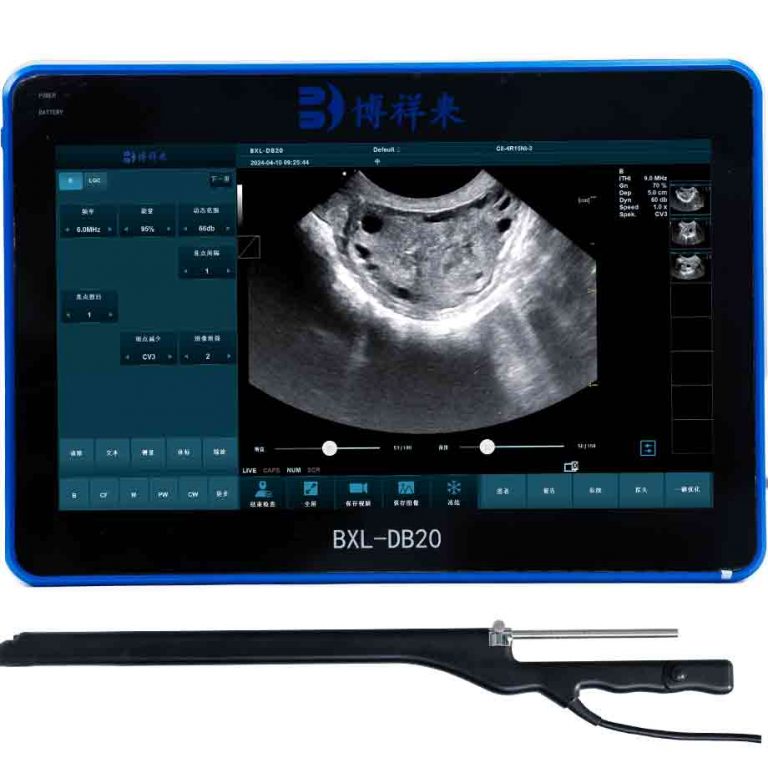Are portable vet ultrasound machines effective?
When chatting with colleagues overseas—or even friends over coffee—”Really, you’re doing scans on the farm with a handheld device?” often gets asked. My answer? Absolutely—and here’s the full story.

Why vets and farmers are turning to portable devices
Back in the clinic days or in big veterinary hospitals, cart-based ultrasound systems used to be the gold standard—awesome image quality, lots of advanced features. But these systems can’t travel well. For field work—whether you’re scanning a mare on the ranch or a cow in the pasture—a bulky console isn’t practical. That’s where portable and handheld ultrasound units shine: lightweight, battery‑powered, and ready to work whether you’re in a clinic, barn, or on a trail drive.
Veterinary pros in North America estimate that 50–80 percent of clinics now own some sort of ultrasound—many of them portable units these days. Even mobile veterinary services thrive on these tools: they let specialists do real‑time diagnostics offsite without starving for resources.
How reliable are these handheld tools?
Recent comparative studies by point‑of‑care ultrasound (POCUS) experts give us a pretty clear picture. A head‑to‑head review of six popular handheld systems showed that no single device was best for every application. For abdominal scanning, GE’s Vscan Air scored highest; Mindray’s TE Air led in cardiac views; Philips Lumify was strongest in superficial neck and lung imaging. Yet overall satisfaction across image quality and ease of use was highest for those three brands: Vscan Air, Lumify, and Mindray TE Air.When it comes to cost-effectiveness, Boxianglai’s BXL-V50 has advantages in all aspects.
So what does that mean for veterinary use? Even though the study was in human medicine, the same interfaces and image‑quality needs apply in vet imaging: fetal checks in livestock, abdominal exams, cardiac assessment, etc. The takeaway: these devices produce signal quality that’s good enough for clinical decisions in the field—even if they don’t always match high-end console machines for the most detailed use cases.
Pros and cons of portable systems compared to console machines
Let’s break it down:
✅ Advantages
-
Mobility and point‑of‑care usability: You can walk into a barn, hold a lightweight probe, and start scanning—no cart needed.
-
Fast diagnosis: On‑site scanning cuts down delays—from hours to minutes—which can be crucial in emergencies or for pregnancy checks and herd health decisions.
-
Cost efficiency: While full-featured consoles can cost tens of thousands, some handheld units like Clarius, Butterfly iQ+, or Mindray TE Air can be relatively affordable or subscription‑based, making them more accessible to small clinics or farms.
⚠️ Limitations
-
Image resolution: Consoles still deliver the clearest, most detailed images—especially for complex cardiac, elastography, or contrast‑enhanced imaging. But for general abdominal, fetal, or musculoskeletal scanning, the gap is narrower than it used to be.
-
Limited features: Some handhelds lack multiple probe types or advanced modalities like color Doppler beyond basic modes. Others may not work well on large or thick-skinned animals.
-
Battery life & ergonomics: Battery runtime and wireless pairing reliability vary between brands. A wired unit may be preferred if the wireless connection is slow or unstable .
What vets overseas say in practice
European and North American vets I’ve spoken to often mention devices like Mindray TE Air, Clarius Vet HD3, Butterfly iQ+ Vet, GE Vscan Air. They praise Vscan Air for intuitive use and strong image quality, especially for abdominal scans; Lumify is favored for lung or superficial work; Mindray scores well on cardiac views and affordability.
One vet working mobile services in small animal and equine says, “Clarius Wireless Scanner is a game‑changer… ultra‑portable… clear real‑time imaging” for on‑the‑spot pregnancy checks, organ evaluation, soft tissue exam.
Another reviewer noted on the Vinno D6 Vet portable unit that image clarity was impressive up to ~10 cm with linear and phased‑array probes. The trade‑off: some awkward touch‑screen quirks and slower workflow in a busy clinic—but as a field‑ready portable, it’s solid.

Summary table: when to use what
| Use Case | Portable handheld ultrasound | Cart‑based console ultrasound |
|---|---|---|
| On‑site herd pregnancy scanning | Ideal—lightweight, quick deployment | Impractical, transport issues |
| Abdominal, fetal, or soft‑tissue checks | Generally accurate, sufficient resolution | Richer image detail, easier to perform measurements |
| Cardiac imaging in large animals | Limited by depth/probe type, but OK for screening | Better for precise valve/flow assessment or advanced echocardiography |
| Long clinic sessions or multi‑user practice | Battery may limit continuous use; software may lack advanced archiving | Stable power, larger screen, robust patient archiving workflow |
| Budget and flexibility | Lower entry cost, scalable via subscription | Higher initial cost, long‑term investment in diagnostics |
Real‑world effectiveness on farms
On farms dealing with cattle, sheep, goats—and even equine breeding—portable ultrasound systems are routinely used to:
-
Confirm early pregnancy (as early as 30–40 days post-insemination)
-
Estimate fetal viability and number
-
Monitor fetal development over time
-
Check abdominal organs: absence or presence of fluid, digestive tract mobility, internal mass detection
-
Evaluate musculoskeletal conditions in bulls, stallions, and herd animals
Farmers I know treat the portable ultrasound as a daily tool, not a luxury. Timing decisions—like when to batch gang flush, feed supplementation planning, or target marketing windows—are all powered by real‑time scanning. In many cases, portable devices have thus become essential parts of herd management.
Final thoughts
Are portable vet ultrasound machines effective? Yes—when used within their design scope. They’re more than capable for many common veterinary tasks, especially in field settings. While they won’t replace high-end console machines in every clinic or advanced imaging center, their ease of use, speed, affordability, and flexibility are game‑changers.
From global voices—from mobile vets in remote areas to specialist clinicians in cities—the verdict is the same: these tools are working. A console may still win on image clarity and advanced features, but if you need fast, reliable decisions outside clinic walls, portable ultrasound is not just effective—it’s essential.





